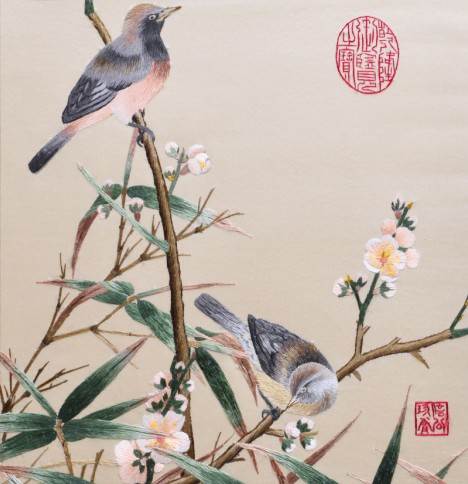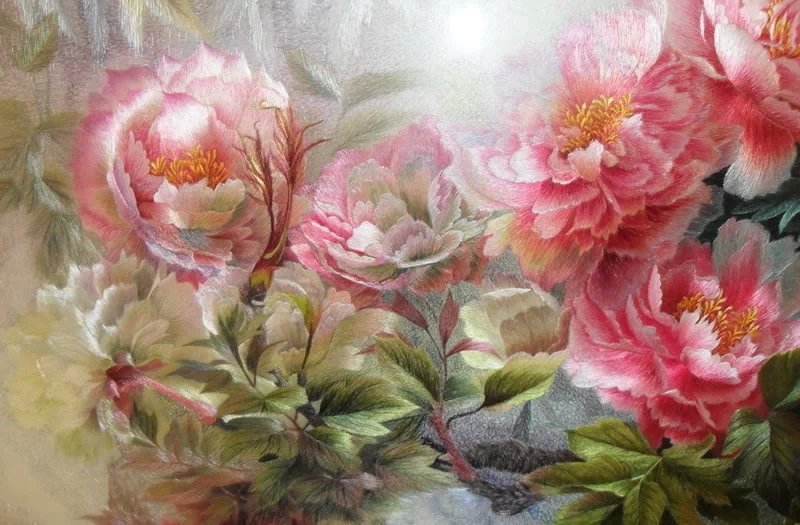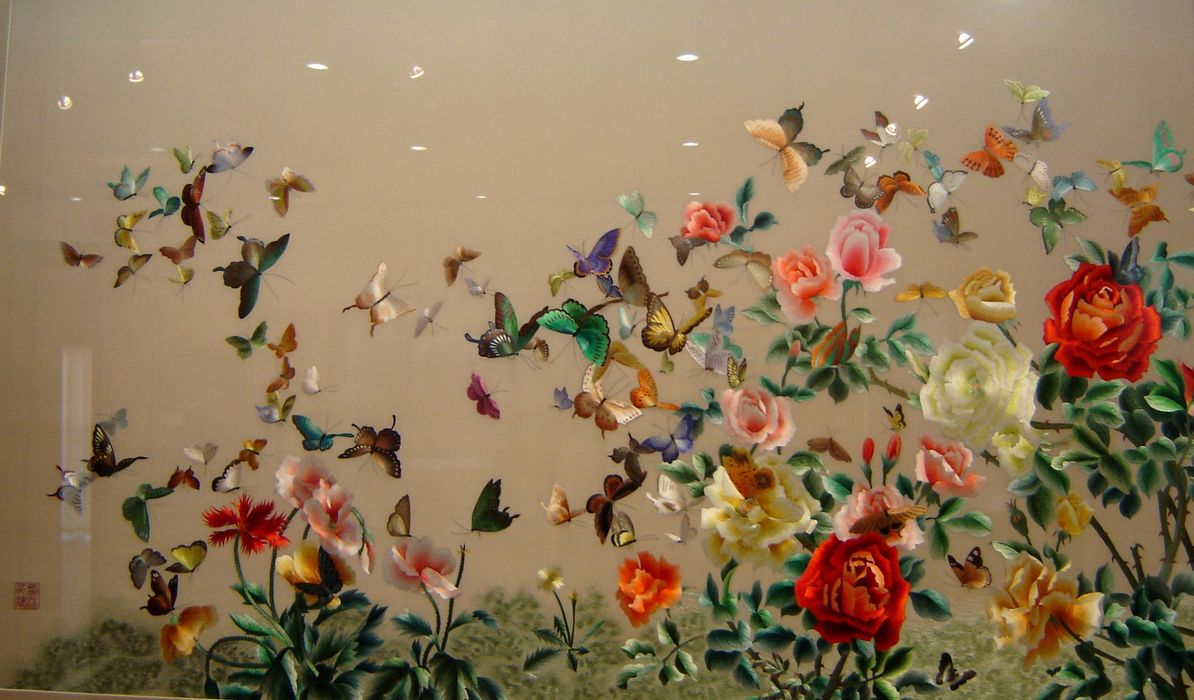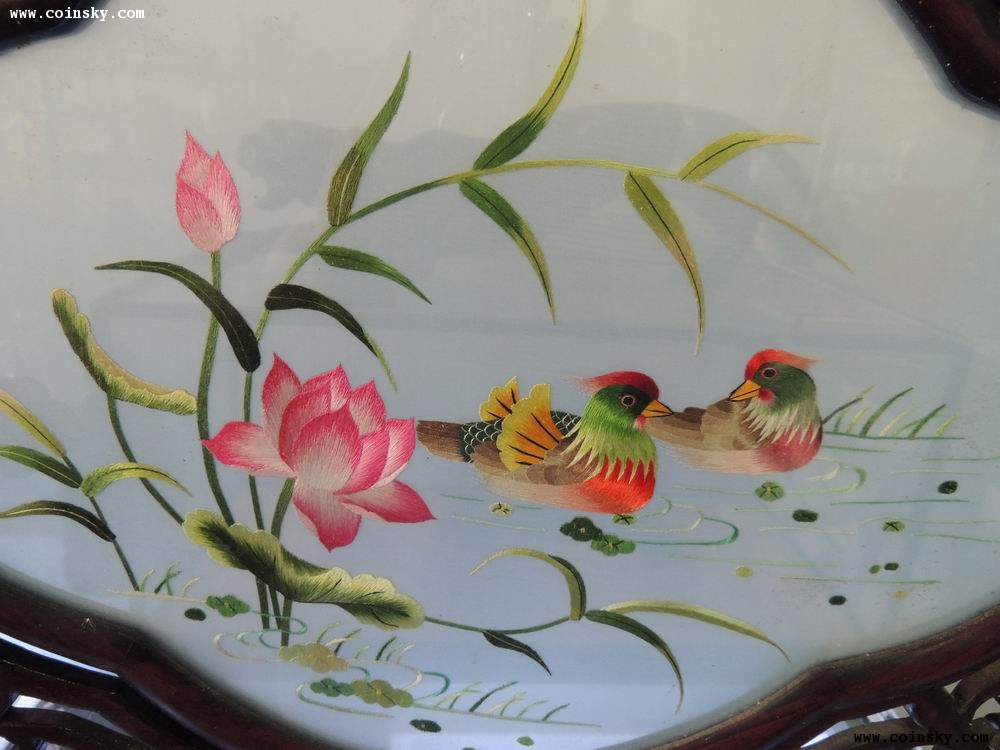Fascinating Charm - Suzhou Embroidery
Xiao Bian is a true northeastern man. He has always been admiring the culture of Jiangnan and admiring it. Every time he hears people around him, he will say: There is heaven on it and Suzhou and Hangzhou under it. Always wanted to explore the culture and history of Jiangnan. Occasionally, he came in contact with Suzhou embroidery, and he was interested in this extremely wonderful thing. What kind of life wisdom can achieve such a high artistic realm? Xiao Bian today to give you an understanding of the charm of Suzhou embroidery.

Suzhou embroidery is one of the outstanding national traditional crafts of the Han nationality. It is the general name for the embroidery products in Suzhou area. Its birthplace is in the area of ​​Wuxian, Suzhou. Now it has spread over Wuxi and Changzhou. Embroidery and sericulture, silk can not be separated, so embroidery, also known as silk embroidery. The Qing Dynasty established " Suxiu, Xiangxiu , and Qiang embroidery" as the four famous embroidery in China . The Qing Dynasty was the heyday of Suzhou embroidery. It was indeed a genre and a masterpiece. Suzhou embroidery has unique features such as beautiful designs, clever ideas, meticulous craftsmanship, lively acupunctures, and elegant colors.
The culture of Suzhou embroidery has a long history. As early as in the Three Kingdoms period, there was a record of Suzhou embroidery. As early as in the Spring and Autumn Period, Wu Guo had used embroidery for clothing. By the Ming Dynasty, Jiangnan had become a center of silk handicrafts. In the art of painting, the Wumen school represented by Tang Yao ( Bureau) and Shen Zhou was promoted to promote the development of embroidery. Embroidered artists perform re-productions in conjunction with paintings. The embroidered masterpieces are lifelike, and their ink and scent are full of emotions. They are known as “ a painting with needles †and “a wonderful workmanship †. Since then, the art of embroidery has formed a unique artistic style in terms of acupuncture and color patterns. The Qing Dynasty was the heyday of Suzhou embroidery. After the liberation, there was a great deal of development. It was true that the schools flourished, the famous artists competed in shows, and the subjects were broad. In the past, a large amount of embroidery was enjoyed by the royal family, almost entirely from the embroidery artists. Embroidered varieties are complete: divided by category, double-sided embroidery, single-sided embroidery; divided by volume, there are Taiwan screens, wall screens, floor screens and large-scale combination screens; according to performance content, there are characters, pets, flowers and birds, landscape , still life, characteristic buildings and so on. With thousands of years of history, Suzhou embroidery has laid foundations in the Sui and Tang Dynasties. The basic composition and characteristics of Song and Yuan Dynasties have gradually developed. The art of embroidery has begun to mature after the Ming and Qing Dynasties.

During the period of the Republic of China, due to social turmoil, the Japanese invasion of China, and the depression of all industries, the production of Suxiu was deteriorating. Many small and medium-sized embroidered villages collapsed. Artists and embroiderers changed their careers, and on the eve of liberation, Embroidered Village was full of 100 More than 50 homes have been attenuated to more than 20, and there are few professional workers engaged in embroidery production.
After the founding of New China, under the guidance of the party's policy of “protecting, developing, and improving†arts and crafts, local governments promoted the sale of embroidery products and improved the enthusiasm for embroidery by organizing the exchange of materials between urban and rural areas. Townships and towns in Wu County, including Zhenhu, Zangshu, Guangfu, Tongan, Dongxu, Mudu, and Qiaokou, almost form the scale of “ every family has embroidered stretches and households have embroidered mothers †. According to the statistics of 1990 , Wuxian embroidered Nianda with a population of 120,000, more than any dynasty in history, and Suzhou embroidery has entered a new era of all-round development and improvement. In 1958 , Suzhou began to promote embroidery. At the end of the 1980s , computer embroidery was used in part, which greatly increased the production capacity of daily embroidery products. There are dozens of tourist spots and hundreds of dealerships in Suzhou City. In the embroidery industry, the division of labor has become increasingly fine . Among them are the Suzhou Embroidery Research Institute, which specializes in embroidery stitching and craftsmanship, the Suzhou Embroidery Factory, which engages in embroidery appreciation and export clothing production, and the Suzhou Embroidery Factory, which produces embroidery and daily necessities. , Suzhou embroidery children's wear factory and Suzhou children's products factory engaged in children's embroidery and daily necessities production, Suzhou opera costume factory engaged in drama costume embroidery and production, Suzhou shoe factory engaged in embroidered shoes production, and engaged in the production of embroidery lines Suzhou Flower Line Factory and so on, as if that full of artistic embroidery and re-distribution of vitality.

With the expansion of China's foreign cultural exchanges, Suzhou embroidery has become a bond linking the peoples of all countries. Beginning in 1956 , the Soviet embroidery artists Gu Wenxia, ​​Xu Zhihui, Tang Hao, Qian Yu, and Liu Jinyan successively performed embroidery art in Britain, Switzerland, Germany, and the former Soviet Union . Every year, the number of Wuzhou guests who visit the Suzhou embroidery artist to perform and watch works is also about 100,000, including former German Chancellor Kohl and Singaporean Minister Li Guangyao . Suzhou embroidery is known as " a living still life " and " a pearl of oriental art " . At the same time, nearly one hundred gifted foreign heads of state were presented for the country’s gifts. Queen Elizabeth II of the United Kingdom , President Kim Il Sung of the Democratic People’s Republic of Korea, President Pompidou of France, Prince Sihanouk of Cambodia, and Nakasone Sakura of Japan had all been exalted. The exquisite embroidery works of art are delighted. For instance , “Songhe Changchun Mapâ€, embroidered by Xue Jinsong, embroidered by the embroiderer of Suzhou in 2001 , was transferred from Shanghai Jiaotong University’s performance center to Kim Jong Il, General Secretary of the Korean Workers’ Party . The works of the Suzhou Embroidery Institute have been exhibited in more than 100 countries. The Suzhou Embroidery Factory has established the “ Suzhou Fine Embroidery Standard †for maintaining the heritage of Suzhou embroidery .
May 20, 2006, the State Council approved the inclusion of embroidery first batch of national intangible cultural heritage record.

The time has been changing. What remains unchanged is that everyone who loves Suzhou embroidery embroiders arts and crafts by emphasizing the heart of the arts and crafts people. Facing the development of various new situations, it is more integrated into the buyer’s ideas and concepts through simple Suzhou embroidery. Niang pure hand embroidery. Let Suzhou embroidery not only be an art, but also more infiltrate humanistic taste.
Xiao Bian will always love Suzhou embroidery and pay attention to Suzhou embroidery. We all work together to pass on this beauty. always.

For more content, please follow this site
Polyester Series,Chenille Curtain Cloth,Shading Chenille Curtains,Insulated Chenille Curtains,Sofa Cushion Raw Materials
Changzhou Shengqiang Textile Factory , https://www.czsqfz.com